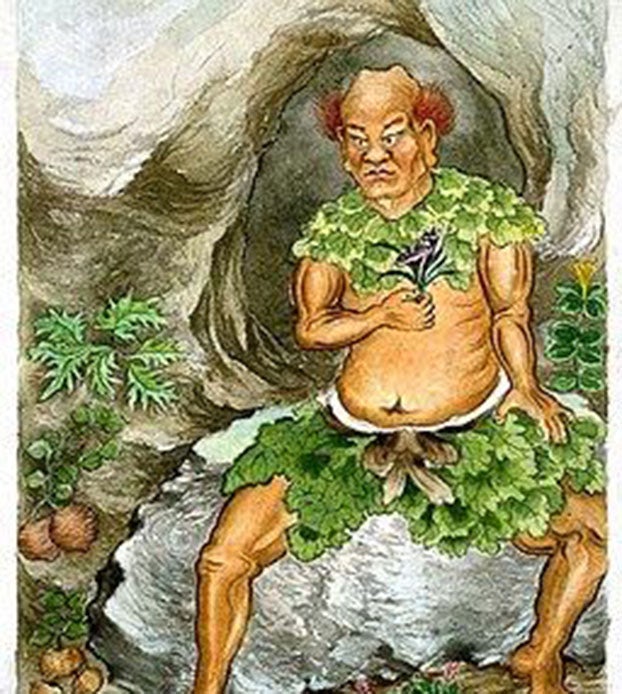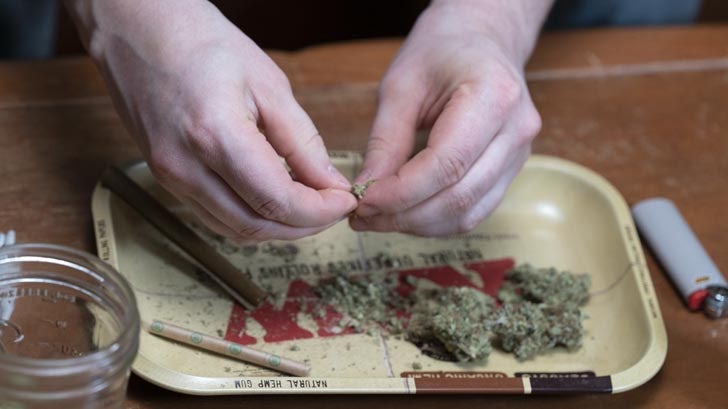Noodles, dumplings, and paper: when you think of Chinese innovations, the last thing that comes to mind is cannabis. Yet the Chinese were the first to come up with a documented medicinal use for cannabis, and that wasn’t even the only use they had for the plant.
The use of cannabis for medicinal purposes dates back thousands of years. Different cultures had different ways of consuming it, as you can learn from our piece on “History of Medical Cannabis”. Here we will focus specifically on one kingdom, two people and a cannabis genus called hemp.
Hemp? What about cannabis?
Hemp is a cannabis genus known for its strength and durability. These qualities made and still make it very popular for industrial use. Where the Chinese used it in producing bowstrings for archers and textiles (Abel, E.L. 1980, Marijuana, The First Twelve Thousand Years. New York: Plenum Press) today’s industry is still using it for manufacturing car seats, paper, and even fuel.

Hemp is also used to extract cannabidiol (CBD) for recreational use. CBD is the second most prevalent component of cannabis, which is known to have anti-inflammatory qualities and is considered helpful in dealing with certain medical conditions like Parkinson’s disease. CBD is legal in many countries because hemp has little to no levels of Tetrahydrocannabinol (THC), the prevalent component that is considered intoxicating and addictive.
However, in ancient China, they didn’t know how to extract CBD and THC. What they did know was how to use the entire plant to take advantage of its medicinal and industrial qualities. They were so proud of their knowledge they even referred to their country as the “land of mulberry and hemp.”
Welcome to the empire
The earliest known written records of the history of China date from as early as 1250 BC, from the Shang Dynasty (c. 1600–1046 BC). Cannabis was known in ancient China as ma and was common in everyday life. Other than warfare, in the service of the emperor, hemp was a trivial raw material for the manufacture of textiles. The common people could not afford to wear traditional Chinese silk, so they wore hemp-based clothing instead—until the Mongols conquered China around 1,200 A.D. and introduced them to cotton.

Nonetheless, the most important innovation to come out of ancient China was paper. At that time, a paper was made by crushing hemp fibers together with mulberry bark to make a pulp, which was then submerged with water. Once they had risen to the surface, the tangled fibers were removed, placed in a mold and dried to become paper. Traces of textiles and paper made from cannabis were found in the 1st-century B.C. tomb of Emperor Wu (the Han Dynasty).
Hemp seed flowers, or ma ren hua, were also found in another well-preserved tomb, this time a 2,100-year-old in the Hunan province. These flowers were found next to numerous grains such as rice and wheat, which indicates that the seeds were consumed as food. It is unclear what dishes were made using hemp seeds, but it seems porridge was one of them. It was consumed as food mainly by poor people and applied externally to treat a variety of skin diseases, wounds, and even falling hair. In later years, hemp seed flowers are mentioned as an extract for frying foods. It was only around the 10th century that hemp seed ceased being a major grain crop in China, although it is still used to make kitchen oil in Nepal.
It is unclear whether the ancient Chinese were taking advantage of the psychoactive effects of cannabis. A few years back, researchers found two pounds of 2,700-year-old cannabis hidden inside a tomb in the Gobi desert. Because the hidden cannabis was not hemp, researchers suspected that it was used for other purposes than clothing or producing ropes. However, the main suggestion was that it was used for medicinal purposes.
Medical Use
The Red Emperor
Cannabis is first mentioned as a medicine in ancient China in the pharmacological book The Herbal (Pen Ts’ao). Though the original was lost in history, legend tells that sometime around 2,500 B.C., the Red Emperor himself wrote the book, guided by divine inspiration. This gave him the title “Father of Chinese Medicine.”

The Red Emperor, Shen Nung (2838 – 2698), ruled over China for over 140 years. He is usually portrayed wearing a coat of green leaves. According to the myth, he started writing Pen Ts’ao as a catalog of plants that can be used as cures. He tested poisons and antidotes on himself before listing hundreds of drugs derived from vegetable, animal, and mineral sources. One of those drugs was derived from a plant called ma, meaning cannabis.
However, ma was unlike any other drug. It was described as having contradicting characteristics: yin and yang. Yin (feminine) represents weakness, passiveness and negative influence on nature, whereas yang (masculine) represents strength, activity and positive male force. When balanced, yin and yang keep the body healthy and in harmony. Because the female cannabis plant produced more medicine, Chinese farmers cultivated it instead of the male plant and used it to treat absences of yin. These included menstruation, gout, malaria, beriberi, constipation, malaria, rheumatism, and absentmindedness.

Surgical use
The first Chinese physicians only performed superficial procedures for treating furuncles, ulcers of all sorts, and small external tumors. Hua Tuo was the first to use cannabis as an anesthetic. Legend says he discovered the medicinal quality of herbs when trying to rescue a wounded deer and later tasted some of them himself to find out which one would make his tongue numb.
During the second century A.D., Hua Tuo used cannabis resin mixed with wine (ma-yo) to reduce pain in surgery. This enabled him to perform procedures in internal organs he couldn’t reach with traditional acupuncture needles. He even managed to pull off procedures like loin and chest incisions.
To this day, Hua Tuo is known in China as “The God of Surgery.” His pioneering work in surgical anesthesia is known as “ma-fei-san,” which translates loosely into “a bubbling wine.” However, the exact formula which he used was lost.
According to the 14th-century novel Romance of the Three Kingdoms, this was due to his imprisonment of Hua Tuo after one of his patients, a warlord named Cao Cao, suspected that Hua Tuo ordered him a skull surgery in order to murder him. Hua Tuo gave his life’s work to a prison guard so it would make it through history. However, the guard’s wife supposedly burnt most pages, while her husband only managed to salvage a few.
Home remedies
The Song Dynasty text Illustrated Classic of Materia Medica (Tu Jing Ben Cao, roughly 1,070 A.D.) mentions a recipe involving cannabis for alleviating severe pain that inhibits movement. The recipe specifies that the cannabis seeds should be soaked in water, the sediment then collected from the bottom of the water, stir-fried, and ground into a fine white powder. It is then boiled with alcohol and taken on an empty stomach. This prescription was repeated in many later texts under the name “cannabis seed wine” (da ma ren jiu). It was possibly meant for people with “bone marrow wind toxin” and pain that prevents movement.

Cannabis was also used as a component in ancient painkillers. Heart Text of Bian Que (Bian Que Xin Shu, 1127–1270 AD) mentions the cannabis flower, called mahua, used in combination with datura flower as an anesthetic. This formula was meant to decrease the sensation of pain and was known as “sagacious sleep powder” (shui sheng san). Cannabis flower was also mentioned as an ingredient in anesthetic through 16th and 17th-century texts.
Cannabis as an academic discipline
Almost a thousand years before the first equivalent western university, China established its first School of Medicine. It was during the reign of the Tang Dynasty (about 630 A.D.) and along with other herbs, the school taught the qualities of medical cannabis.
Later, in the era of the Sung Dynasty, several medical universities were facilitated to train physicians. It was at that time that many medical prescriptions were finally standardized.
A few hundred years later, The Great Herbal of Medicine was finally revisited by Li Shi Chen (1517-1593), known as The Great Medical Textbook Writer. Li Shi Chen modernized the language, updated the list of drugs and took out what he considered to be “the inferior drugs.” His version of the Pen Ts’ao lists almost 2,000 drugs (including cannabis) and is still in use today.
Nevertheless, a textual analysis found that cannabis strains with psychotropic properties were rarely applied in Chinese medicine or gradually became less prominent. This might have occurred due to the reduced prominence of plant parts, such as the female inflorescence in bencao literature (ancient medical texts) over time. Another possible cause is the enduring confusing regarding plant parts, which led to limited practical application and experience by later authors.
Then and now
Ancient China was no stranger to hemp and was even proud of the many uses it found for it. Hemp was widely used as an industrial raw material to produce textiles and paper. Its application in warfare even gave the Chinese archers an advantage over their enemies, whose bows were made of weak bamboo.
The medicinal properties of cannabis were also discovered and acknowledged early on, thanks to The Red Emperor. They were also used in medical practice for many years, possibly as far back as 4,000 B.C. They were studied in the first medical schools and applied by the first Chinese surgeon as an anesthetic in painful medical procedures. Like many other medicinal herbs, cannabis was also used in home remedies for reducing pain and other related medical conditions. Many of the ancient texts that describe the qualities of medical cannabis were only revealed to the West as Red China re-opened itself in 1980. Cannabis today is strictly illegal in China, but the texts that mention it are widely researched and translated into western languages, giving us a glimpse of how the plant was used and what qualities remain relevant today.
Sign up for bi-weekly updates, packed full of cannabis education, recipes, and tips. Your inbox will love it.

 Shop
Shop Support
Support
















